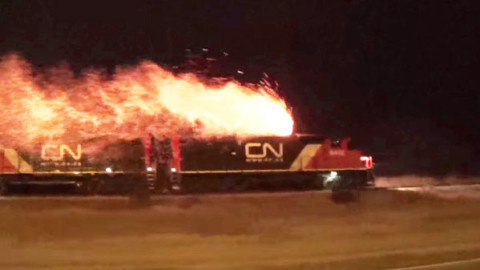JonMyrlennBailey
Active member
One can find many videos on YouTube of modern-day d/e locomotive fire or smoke scenes taken by amateur people with cameras or smartphones. It seems to be mostly the newer engines that have these troubles.
Are these modern engines on today's American roads more prone to fires than the diesel engines of the 20th century?
Is it due to poor design, poor materials, lack of quality control or low-grade maintenance procedures?
I have never heard of ALCO d/e locomotives, EMD/GM F7's, GP7's, GP9's, GP38's, F40PH's, SD40's or SD45's catching on fire or overheating though some of these may have had dynamic brake failure contributing to the San Bernardino, CA SP freight train disaster of 1989.
Of course, steam locomotives used to commonly explode or catch fire when they derailed or wrecked and tank cars full of dangerous chemicals or flammable fuels used to be a common concern.
Our modern American railroads seem to be plagued with new engines that have "Walmart China" quality. The old GM/EMD locomotives of the 20th century never had these troubles. When is the last time you ever witnessed a Geep up in smoke?
https://www.youtube.com/watch?v=a2MVQaeUPZg
Are these modern engines on today's American roads more prone to fires than the diesel engines of the 20th century?
Is it due to poor design, poor materials, lack of quality control or low-grade maintenance procedures?
I have never heard of ALCO d/e locomotives, EMD/GM F7's, GP7's, GP9's, GP38's, F40PH's, SD40's or SD45's catching on fire or overheating though some of these may have had dynamic brake failure contributing to the San Bernardino, CA SP freight train disaster of 1989.
Of course, steam locomotives used to commonly explode or catch fire when they derailed or wrecked and tank cars full of dangerous chemicals or flammable fuels used to be a common concern.
Our modern American railroads seem to be plagued with new engines that have "Walmart China" quality. The old GM/EMD locomotives of the 20th century never had these troubles. When is the last time you ever witnessed a Geep up in smoke?
https://www.youtube.com/watch?v=a2MVQaeUPZg
Last edited:

